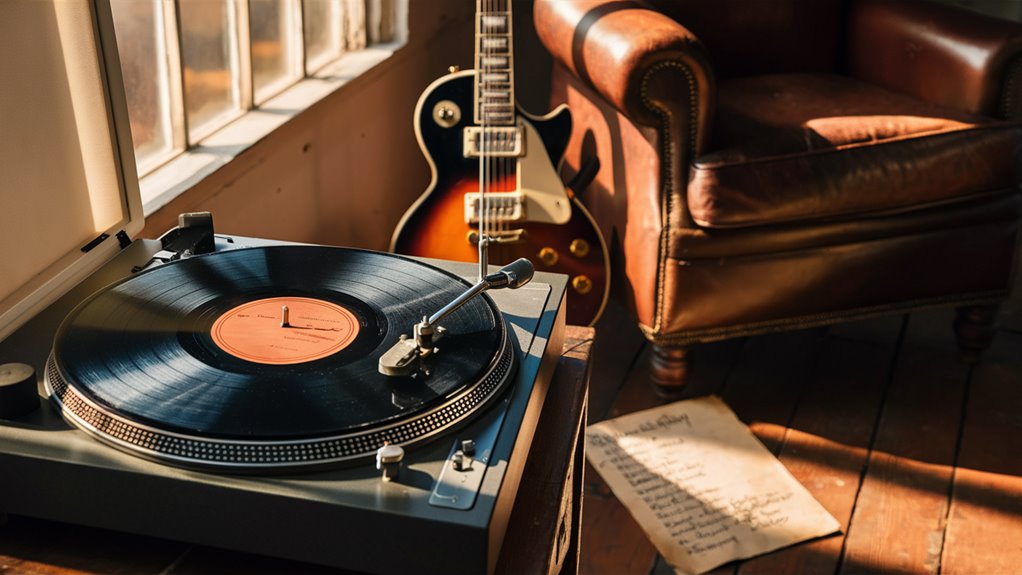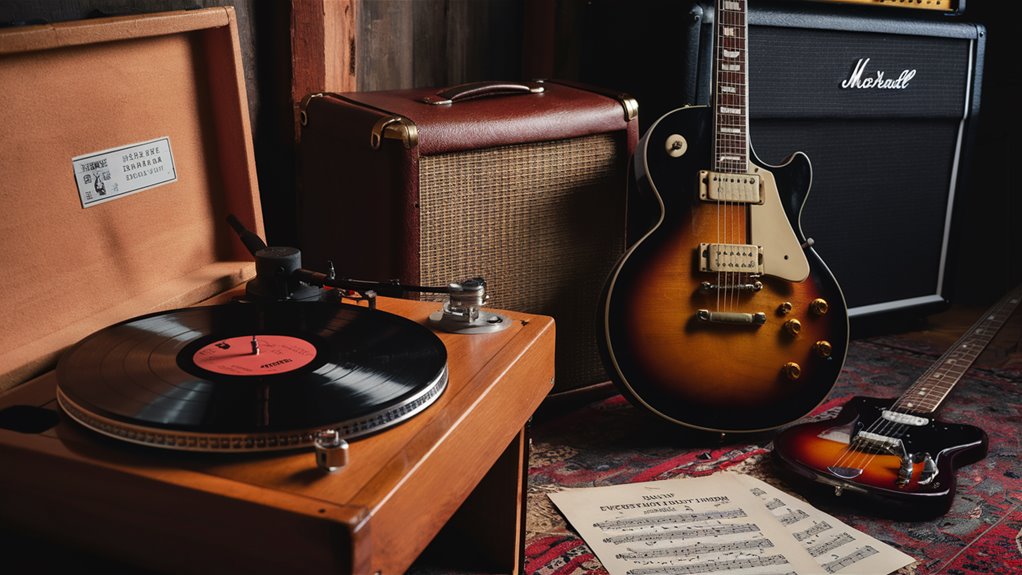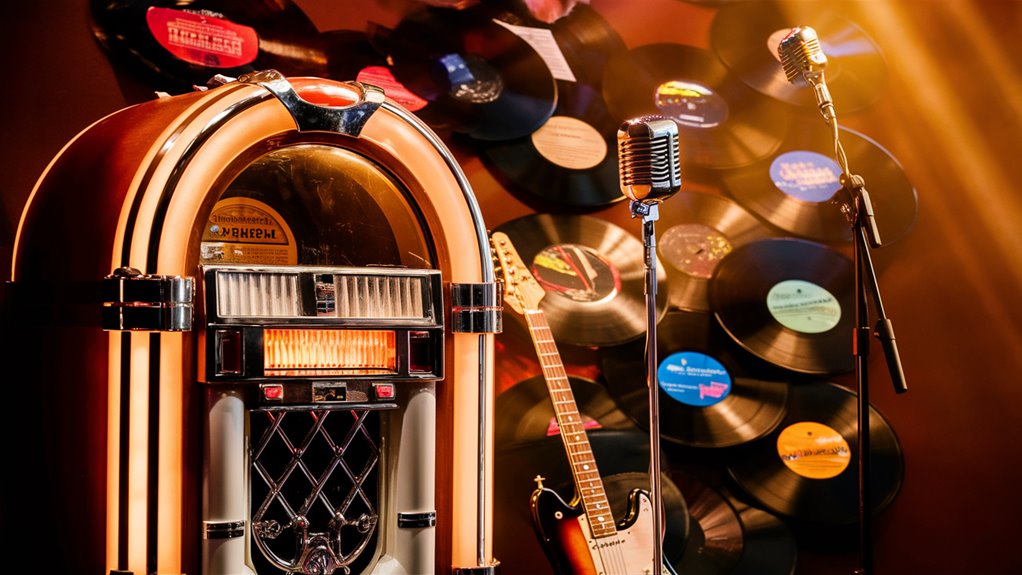
Most Loved Rock Ballads That Are Easy to Nail

Classic Rock Ballads for Beginners
Rock ballads are great for new guitar players who want to learn about deep songs and playing. Big hits like “Yesterday,” “Knockin’ on Heaven’s Door,” and “Every Rose Has Its Thorn” are good starts as they are simple but strong.
Key Parts for Learning Rock Ballads
These loved songs often use easy chord progressions with just 3-4 chords, perfect for beginners. The slow speeds, about 60-70 BPM, help players learn smooth moves and control how loud or soft they play.
Needed Skills and Tips for Practice
A simple electric guitar setup is all you need to start. Focus on:
- Power chord shapes
- Easy strumming ways
- Venue Acoustics
- Smooth chord changes
- Control of loud and soft play
Growing Your Rock Ballad Skills
Plan your practice in 30-minute parts to get good with key skills. These songs help you learn:
- How to show feelings through music
- Keeping the beat
- Knowing song parts
- Connecting with your listeners
These tracks are good for both learning and playing as they mix easy playing with deep feelings.
Rock Ballads Over Time
The Changes of Rock Ballads: 1960s to Now
The Start: 1960s
Rock ballads started in the 1960s, turning simple love songs into deep art. The Beatles’ “Yesterday” made the way for telling stories with music, while Led Zeppelin’s “Stairway to Heaven” made the style bigger with complex sounds and cool themes.
Big Changes: 1970s-1980s
The 1970s brought a big change in how rock ballads were made, with bands like Queen and Aerosmith adding drama and strong guitar peaks. The 1980s brought power ballads, with famous songs from Bon Jovi and Guns N’ Roses that had great studio work and more feelings.
New Styles: 1990s
Grunge and alt rock changed ballads in the 1990s. Pearl Jam’s “Black” and Soundgarden’s “Black Hole Sun” brought in deep feelings and darker themes, making the style more varied.
Modern Rock Ballads
Today’s rock ballads mix old styles with new tech. Artists like Foo Fighters and Muse keep the deep feelings while adding new sounds. This shows how rock ballads keep changing but still connect with people through strong music stories.
Songs Anyone Can Play
Easy Songs for Beginners to Play and Learn
Popular Rock Ballads for New Players
Rock ballads might look hard, but many big songs are easy to start with for new musicians. “Knockin’ on Heaven’s Door” is a great first song with basic chords that you can learn fast.
Guitar-Friendly Classics
“Every Rose Has Its Thorn” is good for new guitar players with its simple strumming and four main chords. The well-known “Yesterday” by The Beatles is another good choice with its easy finger style and catchy tune.
Piano Basics for Beginners
Journey’s “Don’t Stop Believin'” breaks down well for piano learners, starting with its famous start. The known “Sweet Child O’ Mine” can be made simple, letting beginners add more as they get better. Start with the main beats before trying more.
Key Learning Tips
- Work on easy chord changes
- Practice simple strumming
- Learn songs in bits
- Start with simple versions
- Grow skills step by step
- Keep the song feeling
These easy songs keep their musical touch while being easy to get, making them great for new musicians wanting more songs to play.
Needed Gear and Setup
Needed Gear and Setup for Rock Ballads

Main Guitar Gear
Playing rock ballads well means picking the right tools and setting them up right. A good electric guitar, like a Stratocaster or Les Paul, is key for classic rock sounds. A good amp (20-40 watts) with clean and overdrive sounds is the base for practice and recording at home.
Important Extras and Sound Making
Needed extras for playing rock ballads include:
- Pro tuner
- Medium picks
- Capo for changing key
- Dual pickups (single-coil and humbucker)
- Amp with EQ and reverb effects
Recording and Practice Setup
A pro recording space needs:
- Audio interface
- Pro DAW software
- Metronome or drum machine
- Soundproofing panels
- Top mic
- Pro headphones
The mix of dual pickups helps move smoothly between clear arpeggio parts and loud lead parts. Good room sound through soundproofing makes practice and recording sound better. This full technical setup lets musicians play true rock ballad sounds while making their own style.
Basic Skills and Ways
Getting Good with Power Chords for Rock Ballads
Needed Power Chord Skills
Power chord changes are key for strong ballad beats. Learn smooth moves between G, C, and D chord shapes while keeping your wrist easy for the best play. Practice with a metronome set at 70 BPM to get the timing right and keep a steady beat.
Control in Ballad Play
Changing dynamics matters for real rock ballad play. Get good at moving from soft parts to loud parts by controlling how hard you hit the strings. Focus on:
- Clear chord changes
- Changing loudness with how you pick
- Keeping the beat with a metronome
- Keeping your wrist easy for long play
These key ways help make the deep feeling that rock ballads need, letting you shift from soft parts to big loud parts smoothly.
Tips for Beginners
Key Tips for New Musicians
Starting Strong
Daily practice is key for getting good at rock ballad ways. Start with 30-minute practice times, working on one part at a time, not full songs yet. Learn the main chord ways used in rock ballads, working on smooth moves between chords.
Recording and Checking Yourself
Checking your play by recording is key to getting better. Use recording tools to hear your play and find what needs work. Keep your beat right by using a metronome set at 60-70 BPM when trying new stuff.
Basics for Singing Well
Good breath ways are the base of singing well. Use a step-by-step way by learning verses well before trying harder chorus parts. Break hard song parts into smaller bits, adding more as you get better.
Getting Ready and Ways to Do Well
Do finger moves and stretching before https://getwakefield.com/ each practice to get ready. Keep a good sit or stand way and stay easy while you practice to stop tension and play problems. Work on clean ways by careful practice, not hurrying through hard parts.
Main Things for Practice
- Practice every day
- Focus on getting each part right
- Build your skills bit by bit
- Record how you play often
- Warm up every time
- Learn in steps


